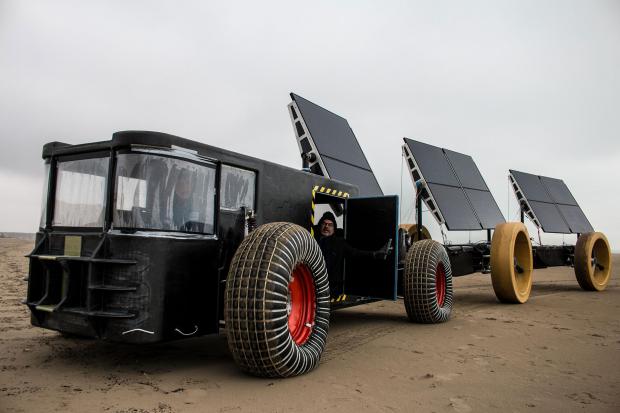
Breaking News
 Nancy Pelosi has officially announced her RETIREMENT at the end of her term, January 3, 2027.
Nancy Pelosi has officially announced her RETIREMENT at the end of her term, January 3, 2027.
 Omeed Malik: The Technocrat Muslim Billionaire Inside MAGA
Omeed Malik: The Technocrat Muslim Billionaire Inside MAGA
 Democrat-led government shutdown is now causing flight delays, threatening air traffic control,...
Democrat-led government shutdown is now causing flight delays, threatening air traffic control,...
Top Tech News
 HUGE 32kWh LiFePO4 DIY Battery w/ 628Ah Cells! 90 Minute Build
HUGE 32kWh LiFePO4 DIY Battery w/ 628Ah Cells! 90 Minute Build
 What Has Bitcoin Become 17 Years After Satoshi Nakamoto Published The Whitepaper?
What Has Bitcoin Become 17 Years After Satoshi Nakamoto Published The Whitepaper?
 Japan just injected artificial blood into a human. No blood type needed. No refrigeration.
Japan just injected artificial blood into a human. No blood type needed. No refrigeration.
 The 6 Best LLM Tools To Run Models Locally
The 6 Best LLM Tools To Run Models Locally
 Testing My First Sodium-Ion Solar Battery
Testing My First Sodium-Ion Solar Battery
 A man once paralyzed from the waist down now stands on his own, not with machines or wires,...
A man once paralyzed from the waist down now stands on his own, not with machines or wires,...
 Review: Thumb-sized thermal camera turns your phone into a smart tool
Review: Thumb-sized thermal camera turns your phone into a smart tool
 Army To Bring Nuclear Microreactors To Its Bases By 2028
Army To Bring Nuclear Microreactors To Its Bases By 2028
 Nissan Says It's On Track For Solid-State Batteries That Double EV Range By 2028
Nissan Says It's On Track For Solid-State Batteries That Double EV Range By 2028
Venturing To The South Pole In An Electric Car Powered By The Sun

Adventurous expeditions have long been a part of the story about the transition to electric vehicle dominance, and now a new effort is about to extend that tradition. Meet the Polar Explorer (pictured above): a solar-powered four-wheel-drive vehicle made largely from recycled plastic that will attempt to reach the South Pole in about 10 weeks from now.
The project arose from the simple act of disposing of some plastic packaging, something millions of us do every day. For the Dutch couple at the heart of the project — Liesbeth and Edwin — this was the proverbial straw that broke the camel's back and it triggered a series of events that ultimately led them to design, build, and test this glorious photon-fed beast.
For the past year or so, the "Clean 2 Antarctica" team has been posting videos of there progress and associated activities, and so you can probably find the answers to any engineering questions among the 68 (to date) visual missives on their YouTube channel. A perusal of its website does give a few interesting facts, though. For instance, its top speed is a mere 8 kph (4.97 miles per hour) while its weight is 1485 kg (3273.87 pounds).

 The Technocratic Dark State
The Technocratic Dark State Carbon based computers that run on iron
Carbon based computers that run on iron

